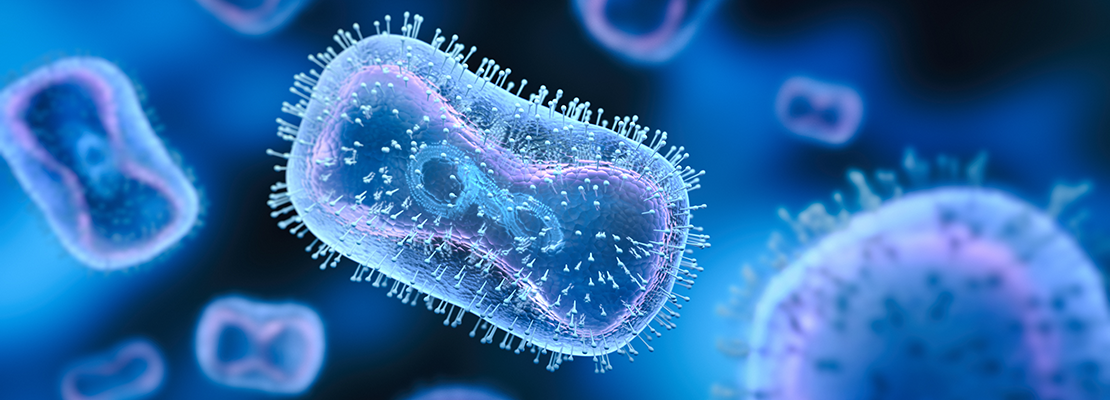What You Should Know About Monkeypox

While the initial outbreak was small, monkeypox quickly joined COVID-19 as a virus of concern this summer. By early August, federal authorities deemed it a public health emergency, and at the time of this article’s publishing the Centers for Disease Control and Prevention (CDC) had identified approximately 24,000 cases in the US. However, despite the rising caseload, monkeypox is not as contagious or as lethal as COVID-19.
Knowing the basic facts on monkeypox—how the virus spreads and its telltale symptoms—can assuage concerns and help you and your loved ones avoid infection.
Does monkeypox come from monkeys?
The virus now known as monkeypox is not a new phenomenon, nor is it specific to monkeys. Monkeypox was first identified as a distinct illness in 1958 among laboratory monkeys in Copenhagen, hence the name. Endemic to West and Central Africa, the virus occurs in apes, livestock, rodents, and other small animals, in addition to monkeys.
Humans originally contracted monkeypox from handling afflicted animals and livestock. It spread beyond endemic regions via infected travelers who visited other countries. Only one outbreak was previously reported in the US, in 2003. However, a concerning feature of the current outbreak is its spread beyond people who have had direct travel exposure to endemic regions.
Will monkeypox be renamed?
According to Stat News, while the World Health Organization (WHO) felt that the potentially racist connotations and general stigma around the name could thwart efforts to stop the spread, it has proven difficult to rename the disease. In addition to concerns over the continuity of scientific literature on monkeypox, they must also find a name that does not raise other offenses. The WHO’s International Committee on Taxonomy of Viruses is currently working on finalizing a suitable name replacement, which is slated to take effect in June 2023.
What are the symptoms of monkeypox?
The incubation period, before an infected individual becomes contagious or symptomatic, can range from 5 to 21 days, according to the WHO. When symptoms do set in, they tend to follow a pattern.
“In the classic presentation of monkeypox, people just start off not feeling well, and then they develop a fever,” says Bobbi S. Pritt, MD, FCAP, a pathologist, infectious disease expert, and a governor of the College of American Pathologists. “They also have swollen lymph nodes. Then the rash comes out.”
The hallmark symptom of monkeypox is a rash that begins as small, flat red spots appearing on the face, inside the mouth, arms, legs, hands, feet, chest, and genital/anal region.
Are monkeypox spots itchy?
According to Dr. Pritt, as time goes on the spots begin to fill with fluid and resemble blisters or pimples. They can be mild or painful and itchy, depending on the individual case and the location. The lesions eventually scab, dry up, and fall off.
“At this point, that’s the end of the rash, and that person is no longer infectious,” Dr. Pritt said.
How is monkeypox spreading?
According to Dr. Pritt, close contact with any lesions in the rash of monkeypox can spread the disease—so it can be nonsexual in origin.
“There have been cases in men who have sex with men,” she said. “But other forms of sexual contact between a man and a woman could also spread the infection.”
Spread can occur during intimate activities, including:
- Oral, anal, and vaginal sex
- Hugging, kissing, and cuddling
- Contact with bedding or other items that have the virus on them during or after intimate activity
At this time, it is not known if monkeypox virus can spread through saliva, semen, or vaginal fluids.
While monkeypox is primarily affecting gay and bisexual men at present, the virus can be spread via close contact of any sort, as well as contact with respiratory secretions and touching any objects, fabrics, or surfaces that have been used by somebody with monkeypox. It’s currently believed that the monkeypox virus spreads from the time symptoms start in a person until their rash has fully healed and a fresh layer of skin has formed. This typically takes about two to four weeks.
How is monkeypox diagnosed and treated?
Vaccines and tests for monkeypox exist. If you think you might have monkeypox, seek prompt medical evaluation and diagnosis.
According to Dr. Pritt, if you suspect you have monkeypox, see your primary care provider but be sure to call in advance so that the office can take proper precautions and contact the CDC.
No treatments have been developed specifically for monkeypox; however, the FDA has permitted compassionate use of several antiviral medications in some cases. For most infected individuals, monkeypox will resolve in four weeks or less without requiring specific medical treatments. However, some people may experience scarring from the rash. The majority of infected persons can expect to make a full recovery without long-term side effects.